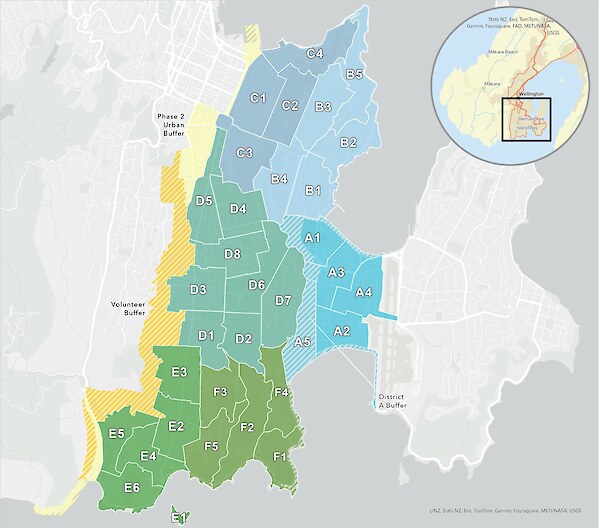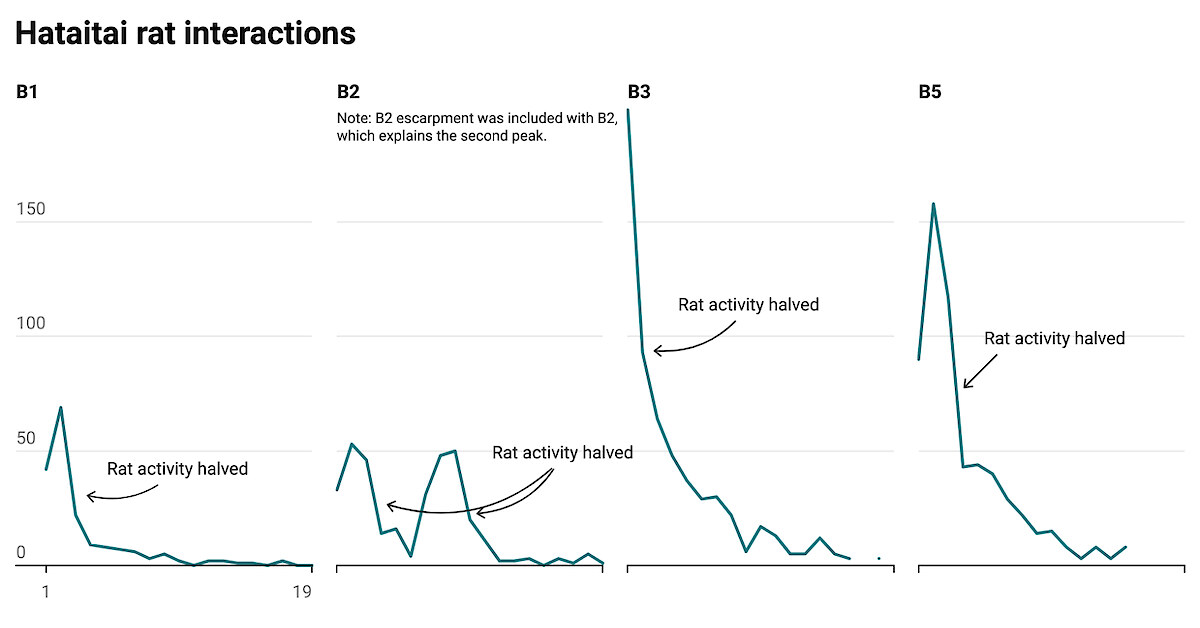Moving our project forward
This story was taken from our 2023/24 impact report.
In Phase 2 of our project, we’re focused on optimising our work. We have proven we can successfully eliminate rats and mustelids in an urban setting: our next challenge is to accelerate the process and reduce costs. This is needed to achieve the ambitious Predator Free 2050 New Zealand goal.
What’s involved with Phase 2?
 Our districts in Phase 2This second phase involves 14 suburbs from Kilbirnie around to Ōwhiro Bay and up through to the CBD. It is home to approximately 60,000 residents, and includes Wellington Zoo, Government House, Massey University and Wellington Regional Hospital.
Our districts in Phase 2This second phase involves 14 suburbs from Kilbirnie around to Ōwhiro Bay and up through to the CBD. It is home to approximately 60,000 residents, and includes Wellington Zoo, Government House, Massey University and Wellington Regional Hospital.
The full Phase 2 rollout will see us install 2,596 traps, 8,488 bait stations and more than 500 detection trail cameras.
How many rats are out there?
It’s a tough question to answer as it’s not just about counting rat catches: we also consider bait station interactions, chew card monitoring and data from our detector dog team. Based on our findings from our work in Hataitai, we estimate there’s at least one rat for every two people. That means around 30-40,000 rats in the rest of Phase 2.
How fast are we moving?
In a strategic shift from our approach on the Miramar Peninsula, Phase 2 has been divided into 32 distinct zones. Splitting the area helps us target our approach more effectively based on the habitat and land use.
We use a ‘rolling front’ approach: beginning our operations in one zone (usually the most easily defendable from reinvasion) and progressively moving across the landscape, eliminating rats and mustelids zone by zone until each district is completed. This creates a moving front line, with some zones actively being worked on and others already cleared and protected from reinvasion. We can open new zones as we finish the previous ones and free up staff. Think of it like puzzle pieces fitting together; over time, the cleared area will grow until the entire phase is complete.

This approach works. It allows us to work intensively in a small area to reach elimination without biting off more than we can manage at one time. Spreading ourselves too thin over too large an area was one of the reasons ship rats weren’t eradicated from the Miramar Peninsula on the first attempt. While we can suppress rats on a large scale, completely removing them is much harder. The size of each zone depends on factors like team size, resources, geography, and urban development.
On average we can halve the rat population after two services (four weeks), and you can see from the examples below how quickly we are getting the rat numbers to almost zero.
Posted: 28 January 2025
